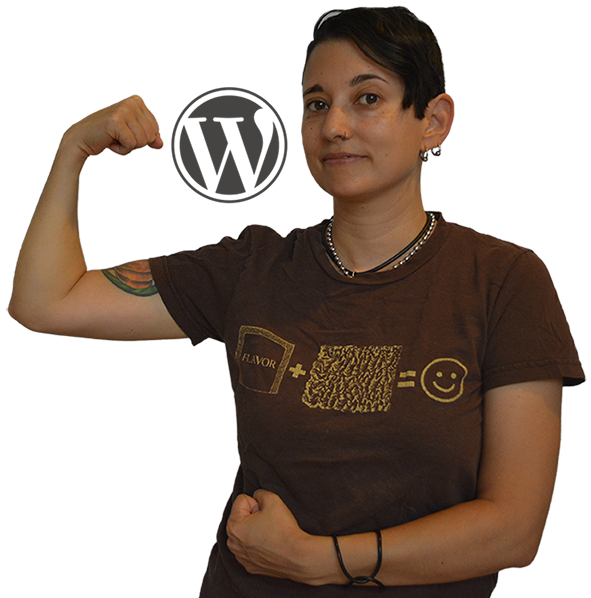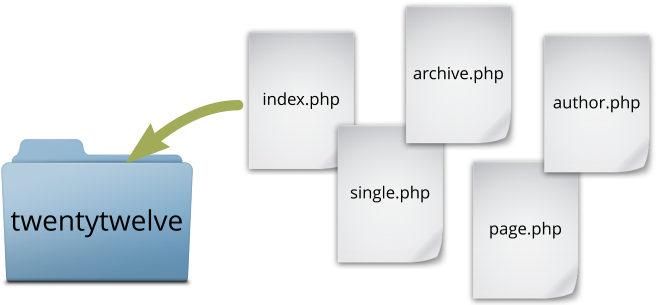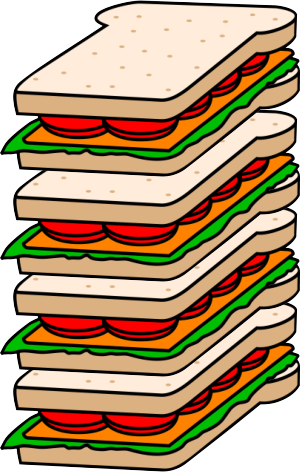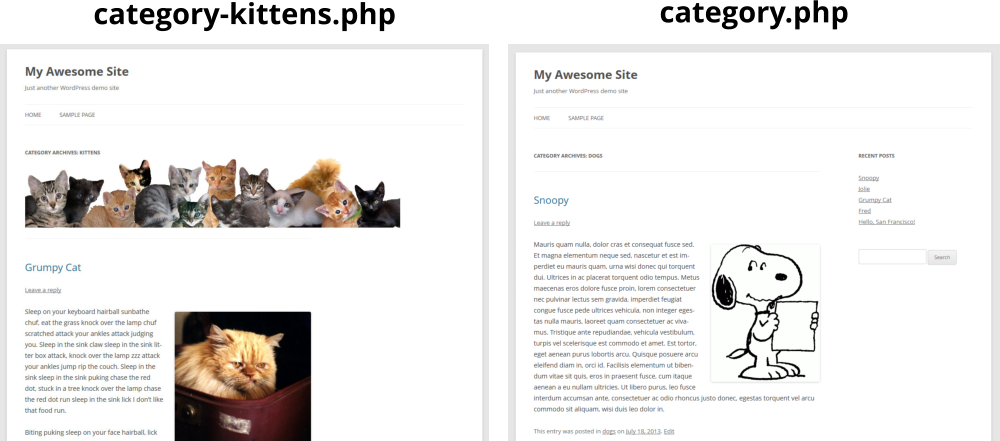What You Don't Know You Can Do
WordPress Development for Absolutely Everyone
With Tracy Levesque / @liljimmi
Hi, I'm Tracy.

I am a Power User

I know HTML

I know CSS

I don't know PHP

There are many folks with skill sets similar to mine.

And we can develop for WordPress, too!
WordPress Development
Demystified!
I'm going to go through some terms being thrown around on that other track and explain what they are, what they can do, and how to use them.
The WordPress Template Hierarchy
The WordPress Template Hierarchy
codex.wordpress.org says:
WordPress uses the Query String — information contained within each link on your web site — to decide which template or set of templates will be used to display the page.
The WordPress Template Hierarchy
Translation
Templates are cool because if you name a template file a certain way, it will automatically apply to a certain page.
There's a chart on WordPress.org that shows how the naming conventions work.
OMG
The WordPress Template Hierarchy
What it is
The chart looks confusing, but it's really pretty simple.
The WordPress Template Hierarchy
What it is
Templates are the files in a theme that tell WordPress how to display your pages. They live in the theme's folder.

The WordPress Template Hierarchy
They're like different frames for your content

The WordPress Template Hierarchy
What it is
Templates handle the display of different pages on your WordPress site such as...
- The main list of posts (the blog page)
- A regular page
- An archive page (Category, Tag, Author, Date pages)
- A single post page
- The search results page
- Etc...
The WordPress Template Hierarchy
What it can do
If you name template files a certain way they will affect the display of those pages.

The WordPress Template Hierarchy
Twentytwelve example
The WordPress Template Hierarchy
How you can use it
Power users - Look for a theme or theme framework that allows you to add/modify templates.
Designers - Make them yourself! Just follow the chart.
The Loop
The Loop
codex.wordpress.org says:
The Loop is PHP code used by WordPress to display posts.
The Loop
Translation
The Loop is a set of instructions in a template that grabs content and displays it on a page.
It's called a "loop" because the set of instructions can be repeated multiple times on a page.
The Loop
The Loop is like making sandwiches.


The Loop
To make a sandwich you collect a set of ingredients and assemble it

The Loop
You repeat the steps of collecting and assembling as many times as needed

The Loop
What it is
Within The Loop are the main parts of a page or post. These are like the slices of bread in our sandwich.
- Title
- Content
The Loop
What it is
You can also grab additional content, aka Metadata, attached to pages or posts. These are like the ingredients in our sandwich.
- Author
- Date
- Featured Image
- Categories (posts only)
- Tags (posts only)
- Etc.
The Loop
What it is
In The Loop you can provide instructions that determine which posts are shown.
For example we could have the following instructions:
- Only show posts from the "Pets" category
- If a post is tagged "kittens" add a special style to it
- If a post is tagged "dogs" don't show it
The Loop
What it can do
Custom loop example on the moviefanfare.com site.
The Loop
How you can use it
Power users - Look for a theme, theme framework or plugin that allows you to modify the display of the posts page.
Designers - Dig into the loop in your theme or child theme and start modifying! Check out The Loop in Action in the WordPress Codex.
Custom Post Types
Custom Post Types
codex.wordpress.org says:
A Custom Type is a Post Type you define.
Custom Post Types
Translation
Normally you only have 2 types of content to choose from: Pages and Posts. Guess what — you can make more!
Custom Post Types
What they are
Pages and Posts are both Post Types. They...
- Are types of content with their own sets of fields
- Have their own admin area in the WordPress admin
- Let you add content in a repeating and consistent manner
- Have a consistent layout (by default) on the front-end of your site.
Custom Post Types
What they are
So instead of just

You could have




Custom Post Types
Really, the possibilities are endless
Custom Post Types
What they can do
Custom Post Types can also have their own custom taxonomies. That just means they can have their own ways to group posts together.
Categories and Tags are taxonomies for Posts and Pages.
Custom Post Types
What they can do
If we created a custom post type called "Movies" some custom taxonomies we could use are
Genre, Year, Director and Rating
With these custom taxonomies you would have archive pages to see all movies by genre, year, etc.
Custom Post Types
Static Guard example
For mystaticguard.com we created 3 custom post types: Products, Stylists and Tips
Custom Post Types
Static Guard example
With Custom taxonomies, The Loop and the WordPress Template Hierarchy, the site is easy-to-manage.
Custom Post Types
How you can use them
Power users - Use a plugin that allows you to create Custom Post Types.
Designers - Code your own. Really! I have a how-to video on WordPress.tv that shows you how.
Hooks, Actions and Filters
Hooks, Actions and Filters
codex.wordpress.org says:
Hooks are provided by WordPress to allow your plugin to 'hook into' the rest of WordPress...There are two kinds of hooks:
- Actions: A custom PHP function defined in your plugin (or theme) and hooked, i.e. set to respond, to specific events that take place in WordPress.
- Filters: Functions that WordPress passes data through, at certain points in execution, just before taking some action with the data
Hooks, Actions and Filters
Translation
Hooks, Actions and Filters allow you to change WordPress functionality without breaking it.
Custom Post Types
What they are
Hooks - Points at which WordPress allows you to tap into a function and safely modify it.
Some examples are:
- Changing the length of the excerpt
- Changing the order of menu items in the admin
- Adding content to the beginning or end of every post
- Adding Custom Post Types
- Adding Sidebars
Hooks, Actions and Filters
What they are
Actions - A hook that makes something new happen when a WordPress function is triggered.
Hooks, Actions and Filters
What they are
Filters - A hook that modifies a WordPress function when it is triggered.
Hooks, Actions and Filters
What they are
Now is when I do my awesome, visual illustration of Hooks, Actions and Filters using a volunteer from the audience.
Hooks, Actions and Filters
What they can do
Hooks, Actions and Filters are what makes WordPress great software for building an amazing site.
Hooks, Actions and Filters
How you can use them
Power users - If you've ever installed a plugin you are using them already.
Designers - Dig into the WordPress Codex article on Theme Development and start adding functionality to your themes.
Resources
- The WordPress Codex - The #1 place to find the best WordPress development information.
- WordPress Terminology Related to Design - From the Codex
- WordPress Custom Post Type Generator - A handy site that creates CPT code for you.
- Guide to WordPress Theme Frameworks - A list of theme frameworks that allow power users to create extended functionality for WordPress.
THE END
Questions?
Slides available on Slideshare: slideshare.net/TheTracyL



